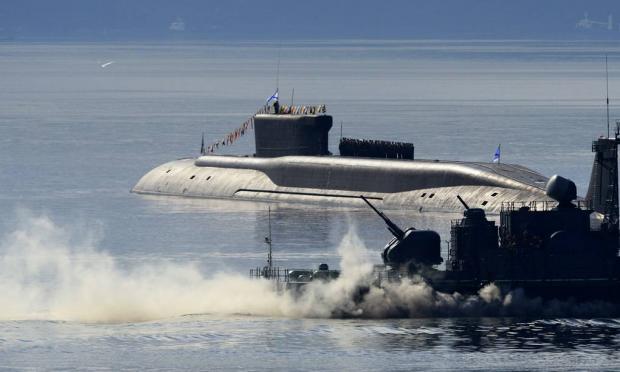Russian submarines have recently been spotted on "strange routes" including off the US coast, underscoring NATO's vulnerability to "war on the seabed".
NATO has to deal with this growing Russian threat to critical infrastructure, including undersea cables, while the Russians have invested heavily in their high-tech submarine fleet.
Late last year, the Russian Navy commissioned the 885M Novosibirsk nuclear submarine, the 955A Prince Oleg nuclear strategic submarine and the 636.3 Magadan diesel-electric submarine.
The 885M Novosibirsk submarine is a Yasen-M class and is known to be a Russian multipurpose nuclear submarine capable of carrying and launching 4th generation cruise missiles. It is equipped with 10 x 533 mm torpedo tubes that fire 30 self-guided and remote-guided torpedoes.
The Novosibirsk submarine is equipped with 8 Onyx hypersonic anti-ship missiles, 8 Zircon anti-ship hypersonic cruise missiles with a scramjet engine, as well as 8 Kalibr cruise missiles. The submarine is also equipped with the Russian Igla-S man-portable anti-aircraft missile system.
The maximum speed of the Novosibirsk submarine underwater reaches 31 knots, but it is almost twice as slow on the surface, at 16 knots. The crew consists of only 64 sailors, but the maximum depth of the submarine is 600 meters, and its optimal working depth is 500 meters.
The 885M Novosibirsk submarine also has excellent stealth capabilities, improved maneuvering systems and advanced communications and sonar, the deputy defense minister explained.
The Knyaz Oleg submarine is of the Borey-A class. The Knyaz Oleg submarine is a 4th generation nuclear strategic submarine. On the surface it develops a speed of 15 knots, while its speed underwater is 29 knots. The submarine's crew consists of 107 people, who together with the submarine dive to a maximum depth of 480 m.
The submarine carries several anti-ship cruise missiles in total, but unlike the Novosibirsk submarine, the Prince Oleg submarine carries two less torpedoes, which is eight. However, the submarine is armed with 16 SLBM Bulava submarine-launched ballistic missiles. Like the first submarine, this one is also equipped with the Russian Igla S man-portable anti-aircraft missile system.
Russia's submarines are widely regarded as a formidable force, and the US, along with its NATO allies, has seriously neglected underwater warfare as the alliance desperately scrambles to make up ground.
"Russia has invested massively in its submarine capability since 2014, first of all submarines," former First Deputy Chief of Defense of Ukraine and Chief of Staff of the Ukrainian Navy, retired Admiral Ihor Kabanenko, told Newsweek, pointing to a series of new Russian nuclear and conventional submarines commissioned in the last decade.
Questions remain about how well Russia has maintained its submarine fleet, but a consensus shows a clear Western wariness about Moscow's capabilities, particularly its 11 nuclear-powered ballistic missile submarines (SSBNs), such as the Borei-A class submarines .
Russia also has nuclear-powered Cruise Missile Submarines (SSGNs), including the Yasen-class submarines, in its arsenal.
"The Kola Peninsula, where Russia bases its Northern Fleet and much of its nuclear deterrent, has always been 'the most important military area for the old Soviet Union, and so it is for Russia today,'" according to Mark Grove, Senior Lecturer at the University of Lincoln's Maritime Studies Center at Britannia Royal Naval College Dartmouth.
This Arctic region could once again become the frontline of tensions as relations between Moscow and the NATO bloc become more strained.
"NATO enlargement, in the minds of the Russians, undoubtedly raises concerns about the viability and security of these facilities, and indeed of the Northern Fleet itself," he said.
Finland's accession to NATO, and soon Sweden's, brings the alliance closer to the peninsula. This could mean that Russian submarine bases fall within the "potential long-range target system," according to Graeme P. Hurd of the George C. Marshall European Center for Security Studies.
But the same principle applies to the Russian Baltic Fleet, which docks in Russia's Kaliningrad region between Lithuania and Poland.
NATO's Nordic expansion had a "massive effect" there, Grove said, effectively turning the Baltic into what he called a "NATO lake."
"It means that the Russian Baltic fleet, which is a diminished force compared to its Soviet predecessor anyway, looks extremely vulnerable," Grove added.
Russian submarines, however, with the ability to carry BULAVA ballistic missiles, pose a terrible threat not only to NATO, but also to American cities in the event of a conflict with Russia.


